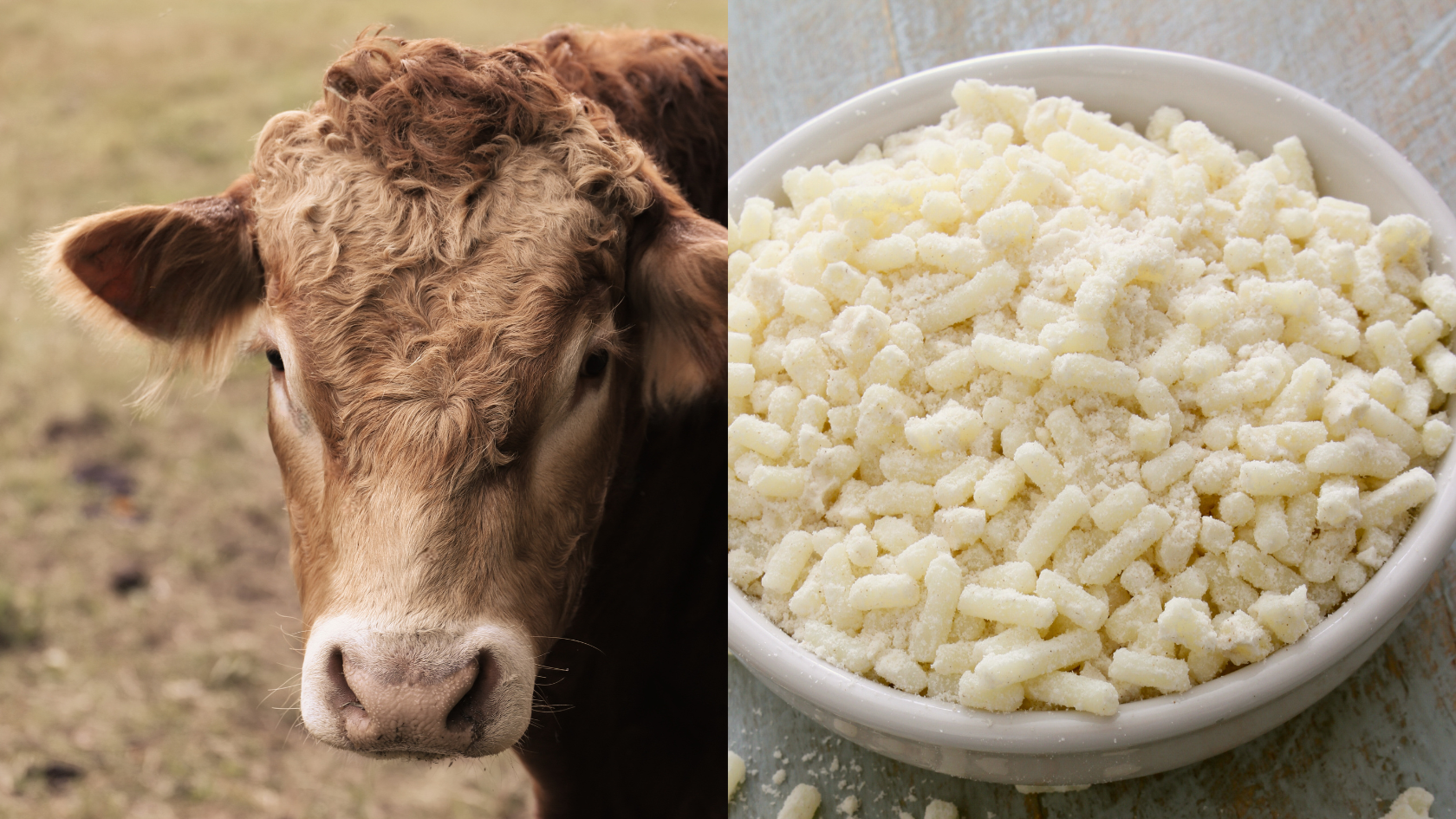Cooking with animal fats might seem old-fashioned, but you’d be surprised how these traditional ingredients can transform your meals. You’ve likely heard of suet and tallow, but do you know the difference? Suet is the raw, hard fat from around a cow’s kidneys, while tallow is the rendered (melted and strained) form of suet.
While both come from beef, their uses in the kitchen vary. Suet’s high melting point makes it great for pastries and dumplings, giving them a light, flaky texture. Tallow, on the other hand, is versatile for frying and sautéing. Its rich flavour can add depth to your favourite dishes.
Don’t let the idea of cooking with animal fats scare you off. These natural ingredients have been used for centuries and offer unique flavours and textures that vegetable oils can’t match. Plus, they’re packed with nutrients your body needs. Ready to give suet and tallow a try in your cooking?
Key Takeaways
- Suet is raw beef fat, while tallow is the rendered form
- Both fats have distinct culinary uses and nutritional benefits
- Incorporating these traditional fats can enhance flavour and texture in cooking
Understanding Suet and Tallow
Suet and tallow are animal fats with unique properties and uses. You’ll find these fats have different origins, nutritional profiles, and cooking applications that make them valuable in the kitchen.
Definitions and Origins
Suet is the hard fat found around the kidneys and loins of cows and sheep. It’s raw and unprocessed, often used in its natural form. Tallow, on the other hand, is the rendered form of suet. To make tallow, you heat suet to remove impurities, resulting in a stable cooking fat.
Suet has a crumbly texture and needs to be kept cold. Tallow is smoother and can be stored at room temperature. Both fats have been used for centuries in cooking and other applications.
Nutritional Profiles
Suet and tallow are rich in saturated fat and calories. They also contain some unsaturated fats and essential nutrients. Here’s a quick breakdown:
- Saturated fat: High in both
- Cholesterol: Present in both
- Vitamin D: Found in small amounts
- Conjugated linoleic acid (CLA): Present in both, may have health benefits
Suet tends to have more minerals like iron and zinc compared to tallow. Both fats are popular in high-fat diets like carnivore and keto diets due to their nutrient density and lack of carbs.
Common Uses in Cuisine
You’ll find suet and tallow used in many traditional recipes. Suet is often used in:
- Pastry dough for meat pies
- British puddings
- Mincemeat for holiday treats
Tallow shines in:
- Frying foods (it has a high smoke point)
- Sautéing meats and vegetables
- Making crispy roast potatoes
Both fats add richness to savory dishes. Tallow’s longer shelf life makes it more versatile for everyday cooking. You might use suet for special holiday recipes or when you want that classic, rich flavour in baked goods.
Culinary Insights
Suet and tallow offer unique benefits in the kitchen. They differ in texture, flavour, and cooking uses. Let’s explore how these fats can enhance your cooking.
Texture and Consistency
Beef suet is firm and crumbly when raw. It has a higher melting point than tallow. You’ll find it keeps its shape at room temperature. When you cook with suet, it slowly melts, adding richness to dishes.
Tallow is smoother and softer. It melts easily, spreading evenly in your pan. You can use it like butter or oil in many recipes. Its creamy texture makes it great for spreading or mixing into doughs.
Both fats become liquid when heated. Suet takes longer to melt fully. Tallow turns clear and golden when melted.
Flavour Contributions
Suet has a mild, beefy taste. It doesn’t overpower other flavours in your dish. You might notice a slight meaty note in baked goods made with suet.
Tallow adds a richer flavour to your cooking. It has a more pronounced beef taste. This can be great for savoury dishes. It gives a depth of flavour to roasted veggies or fried foods.
Both fats can make your food taste more satisfying. They carry flavours well, helping spices and herbs shine in your recipes.
Cooking Techniques
Suet works well in traditional British puddings and pastries. You can use it to make flaky pie crusts or rich dumplings. It’s also great for deep frying, as it has a high smoke point.
Tallow is versatile in the kitchen. You can use it for:
- Roasting: Coat veggies or meats for a crispy finish
- Deep frying: It’s stable at high heat
- Sautéing: Use it instead of oil or butter
Both fats are good for high-heat cooking. They don’t burn easily, making them safe for frying. You can also use them to season cast iron pans.
Health and Nutrition
Suet and tallow have unique nutritional profiles that can affect your health. These animal fats contain different types of fatty acids and calories, which play a role in your diet and well-being.
Fats and Health Implications
Animal fats like suet and tallow are rich in saturated fats. You might worry about heart health, but these fats can be part of a balanced diet. Tallow has more unsaturated fats than suet, making it a bit softer.
Both contain conjugated linoleic acid (CLA), which may have health perks. CLA might help with:
- Weight management
- Immune system support
- Reducing inflammation
Keep in mind that moderation is key. Too much saturated fat can raise bad cholesterol. Talk to your doctor about how these fats fit into your diet, especially if you have heart concerns.
Comparing Caloric and Fat Content
Suet and tallow are high-calorie foods, as they’re pure fat. Here’s a quick look at their content:
| Fat Type | Calories per 100g | Saturated Fat % |
|---|---|---|
| Suet | 902 | 52% |
| Tallow | 902 | 50% |
Both are energy-dense, but tallow has slightly less saturated fat. This small difference might matter if you’re watching your saturated fat intake.
Tallow also has more unsaturated fats, which are often seen as heart-friendly. But remember, all fats are high in calories. If you’re trying to lose weight, use these fats sparingly.
Practical Uses Beyond Cooking
Suet and tallow have many uses outside the kitchen. These versatile fats can help you with household tasks and creative projects.
In Homemaking
You can use tallow to make soap and candles. Tallow soap is gentle on your skin and lasts a long time. To make candles, melt tallow and pour it into moulds with wicks. These candles burn cleanly and smell nice.
Tallow is great for polishing wood and leather. Mix it with beeswax for a natural furniture polish. You can also use it to waterproof boots and bags.
Suet is perfect for bird feeders. Birds love its high energy content. Mix suet with seeds and nuts, then put it in a mesh bag outside.
Creative Applications
You can use tallow in cosmetics. It’s a great base for lip balms and lotions. Tallow moisturizes your skin and helps it stay soft.
Try using tallow to make pemmican, a traditional high-energy food. Mix dried meat, berries, and melted tallow. Shape it into bars for a long-lasting snack.
Suet can be used in crafts. Mould it into shapes for decorations. You can also use it to make crayons by mixing it with pigments.
Storing and Handling

Proper storage and handling of suet and tallow are key for keeping them fresh and safe to use. Let’s look at how to preserve these fats and handle them the right way.
Preservation and Shelf Life
Suet and tallow have different shelf lives due to their makeup. Suet should be kept in the fridge and used within 5 days if it’s fresh. If you want to keep it longer, pop it in the freezer where it’ll last up to 6 months.
Tallow, on the other hand, is a champ at lasting. You can store it at room temp in a sealed container for up to a year! When it cools, it turns solid and white.
Here’s a quick guide for storing:
- Suet: Fridge (5 days) or Freezer (6 months)
- Tallow: Room temp (up to 1 year)
Safe Handling Practices
When you’re working with suet or tallow, cleanliness is key. Always use clean tools and containers to avoid any yucky bacteria growth.
For suet:
- Wash your hands before handling
- Use a clean knife to cut it
- Wrap it tightly in plastic or put it in an airtight container before storing
For tallow:
- Let it cool a bit after rendering
- Strain it through a cheesecloth to remove any bits
- Pour into clean, dry jars for storage
When you’re ready to use either fat for cooking, just scoop out what you need. With tallow, you might need to warm it a bit if it’s solid. Always check for any odd smells or colours before using – that’s your cue it might have gone off.
Diversity in Animal Fats
Animal fats come in many forms, each with unique properties. You’ll find a range of options from different species that can enhance your cooking and nutrition.
Comparing Suet and Tallow With Other Fats
Suet and tallow are just two players in the world of animal fats. Tallow is mostly saturated fat, similar to lard from pigs. Lard is softer at room temperature and great for flaky pastries.
Ghee, a type of clarified butter, has a higher smoke point than regular butter. It’s perfect for high-heat cooking.
Here’s a quick comparison:
- Suet: Hard, raw fat from around beef kidneys
- Tallow: Rendered beef or lamb fat
- Lard: Rendered pig fat
- Ghee: Clarified butter, milk solids removed
Each fat has its own flavour profile and best uses in the kitchen. You might prefer tallow for deep frying, while ghee works well for sautéing veggies.
Species Variations
The fat from different animals varies in texture and taste. Beef suet is harder than lamb suet due to its higher saturated fat content.
Beef tallow is popular for its neutral flavour and versatility. Lamb tallow has a stronger taste that you might enjoy in hearty dishes.
Other animal fats to explore:
- Duck fat: Rich flavour, great for roasting potatoes
- Chicken fat (schmaltz): Used in traditional Jewish cooking
- Goose fat: Luxurious option for special occasions
Each species offers a unique fat profile. You’ll find that experimenting with different animal fats can add new dimensions to your cooking.
Cultural and Historical Significance

Suet and tallow have played key roles in British cooking for centuries. These fats have shaped traditional dishes and holiday treats that are still enjoyed today.
Traditional British Dishes
You might be surprised to learn how many beloved British recipes use suet or tallow. Christmas pudding, a festive favourite, relies on suet for its rich texture.
Spotted dick, another classic dessert, gets its name from the suet-studded appearance. You’ll find it’s often served with warm custard for a comforting treat.
Haggis, Scotland’s national dish, traditionally uses suet as a key ingredient. It helps bind the mixture of organ meats and oatmeal.
Dumplings are another British staple that often call for suet. They add a delightful lightness to hearty stews and soups.
During the holidays, you’ll find tallow candles adding a warm glow to many homes, carrying on a centuries-old tradition.
Modern Dietary Trends
Suet and tallow have gained new popularity in recent years. People are rediscovering these traditional fats as part of specialized eating plans.
Keto and Carnivore Diets
On keto and carnivore diets, you’ll often see suet and tallow used. These diets focus on high-fat, low-carb eating. Suet and tallow fit well because they’re nearly zero carbohydrates.
Keto dieters like using tallow for cooking. It has a high smoke point, making it great for frying. Carnivore dieters may eat suet raw or cooked as a fat source.
Both fats can help you feel full. They also provide energy on these low-carb diets. Many find tallow easier to use in recipes, while suet is often added to ground meats.
Vegetarian and Vegan Considerations
If you’re vegetarian or vegan, you’ll need to find substitutes for suet and tallow. Plant-based options can mimic some of their qualities.
Coconut oil is a popular choice. It’s solid at room temperature like suet. For baking, you can try vegetable shortening or firm margarine.
Some recipes use grated frozen coconut butter as a suet substitute. This works well in traditional puddings and pastries.
Remember, plant-based fats won’t have the same flavour as beef fats. You might need to adjust seasonings in your recipes to compensate.
Frequently Asked Questions About Suet vs Tallow
Suet and tallow have some key differences in flavour, nutrition, and uses. You might wonder about swapping one for the other or how they compare for weight loss.
What are the differences in flavour between suet and tallow?
Suet has a milder taste than tallow. You’ll find suet is more neutral, while tallow has a richer, beefier flavour. This impacts how each fat works in recipes.
Tallow’s stronger taste can add depth to savoury dishes. Suet’s mild flavour makes it better for sweet baked goods.
How do suet and tallow compare nutritionally?
Both suet and tallow are high in saturated fat. You’ll get similar calories from each.
Tallow may have slightly more nutrients because of the rendering process. It contains vitamins A, D, E, and K.
What can beef suet be typically used for in cooking?
You can use beef suet in many traditional recipes. It’s great for making pastry, especially for savoury pies.
Suet is also used in some puddings and dumplings. You might add it to mincemeat for extra richness.
Is there a significant difference in yield when rendering tallow from suet?
When you render suet to make tallow, you’ll lose some volume. The exact yield can vary.
Generally, you’ll get about 70-80% tallow from your starting amount of suet. The rest is water and impurities that cook off.
Can you replace suet with tallow in recipes, and if yes, how?
Yes, you can often swap tallow for suet in recipes. But you’ll need to adjust for texture differences.
Tallow is softer than suet at room temperature. You might need to use slightly less tallow or chill it before using in pastry.
What should I consider when deciding between suet and tallow for weight loss purposes?
Both suet and tallow are high in calories. You’ll want to use them sparingly if you’re trying to lose weight.
Tallow might be slightly better because it’s purer fat. Suet contains some connective tissue, which doesn’t add nutritional value.
